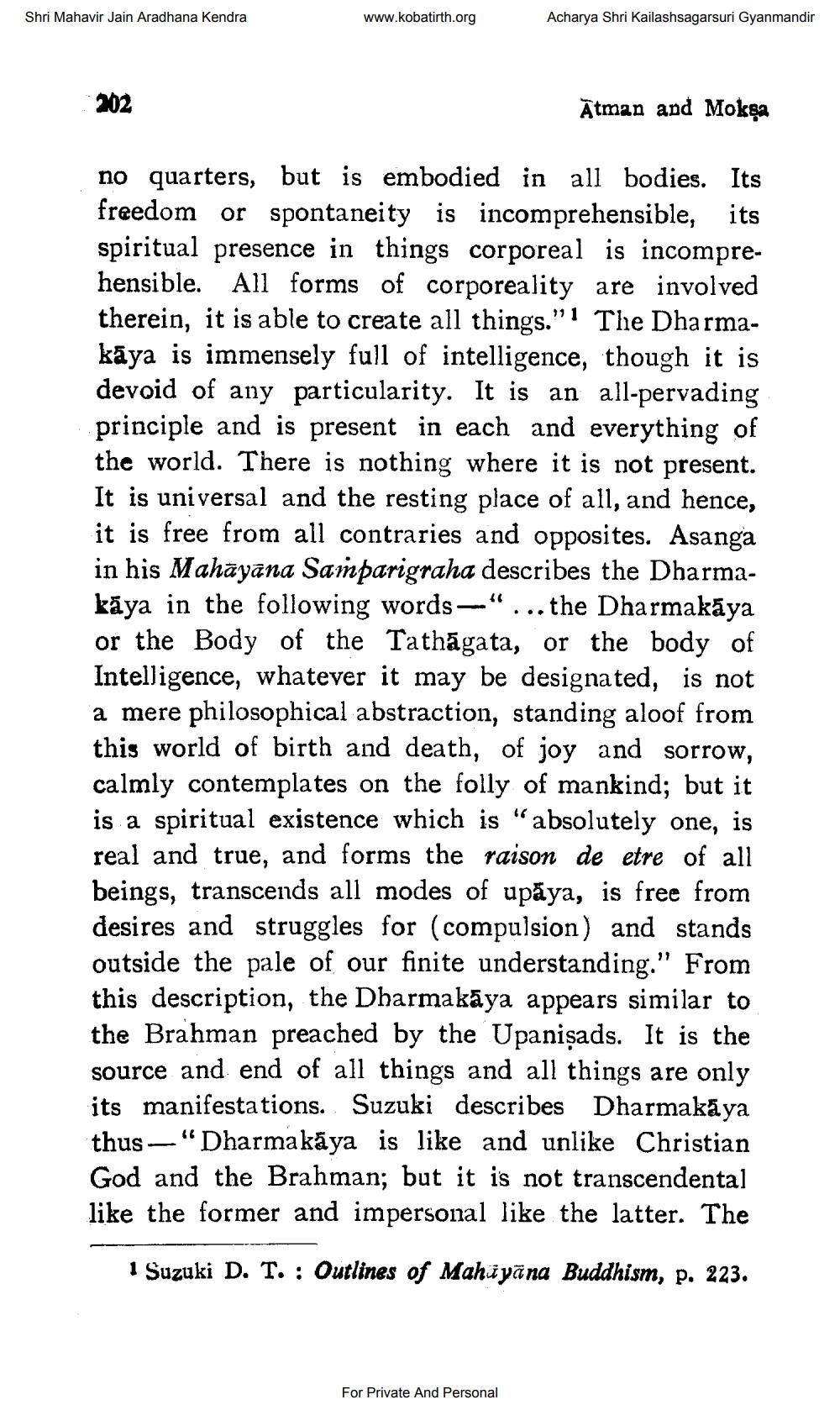________________
Shri Mahavir Jain Aradhana Kendra
www.kobatirth.org
Acharya Shri Kailashsagarsuri Gyanmandir
202
Atman and Mokpg
no quarters, but is embodied in all bodies. Its freedom or spontaneity is incomprehensible, its spiritual presence in things corporeal is incomprehensible. All forms of corporeality are involved therein, it is able to create all things."1 The Dharmakāya is immensely full of intelligence, though it is devoid of any particularity. It is an all-pervading principle and is present in each and everything of the world. There is nothing where it is not present. It is universal and the resting place of all, and hence, it is free from all contraries and opposites. Asanga in his Mahayana Samparigraha describes the Dharmakāya in the following words—“... the Dharmakāya or the Body of the Tathāgata, or the body of Intelligence, whatever it may be designated, is not a mere philosophical abstraction, standing aloof from this world of birth and death, of joy and sorrow, calmly contemplates on the folly of mankind; but it is a spiritual existence which is "absolutely one, is real and true, and forms the raison de etre of all beings, transcends all modes of upāya, is free from desires and struggles for (compulsion) and stands outside the pale of our finite understanding." From this description, the Dharmakāya appears similar to the Brahman preached by the Upanişads. It is the source and end of all things and all things are only its manifestations. Suzuki describes Dharmakāya thus - "Dharmakāya is like and unlike Christian God and the Brahman; but it is not transcendental like the former and impersonal like the latter. The
1 Suzuki D. T. : Outlines of Mahiyana Buddhism, p. 223.
For Private And Personal




